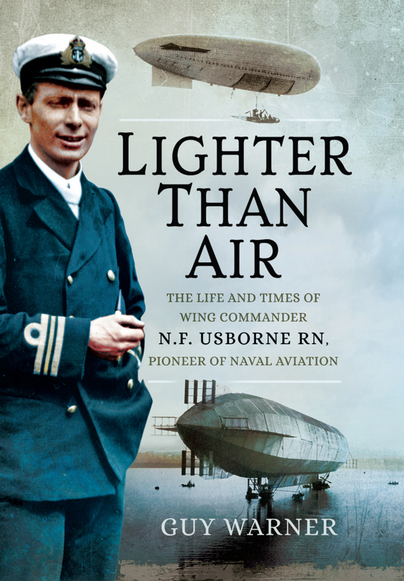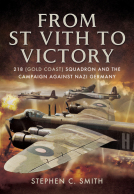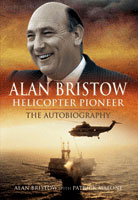Lighter Than Air (ePub)
The Life and Times of Wing Commander N.F. Usborne RN, Pioneer of Naval Aviation
Imprint: Pen & Sword Aviation
File Size: 5.7 MB (.epub)
Pages: 310
Illustrations: 50 black and white illustrations
ISBN: 9781473829046
Published: 18th April 2016
| Other formats available | Price |
|---|---|
| Lighter Than Air Paperback Add to Basket | £16.99 |
| Lighter Than Air Hardback Add to Basket | £25.00 |
Neville Florian Usborne entered the Royal Navy as a cadet in 1897. In the years between him joining up and the outbreak of the First World War, he engaged in a huge number of enterprises and endeavours. Praise and respect garnered in accordance with his achievements all helped to establish his reputation in later years as an 'irreplaceable' pioneer and a leading light of early British airship design. His fertile imagination and enterprising spirit fused to form a dynamic personality, able in wartime to draw up countless schemes in an effort to outwit the enemy.
His chief task during the Great War was to dream up new tactics and designs to combat the Zeppelin menace, perceived as one of the most damaging threats of the entire conflict. He was also deeply involved in the design of the very successful SS and Coastal Class airships; indeed, during 1915 he was actually appointed Inspector Commander of Airships at the Admiralty. Unfortunately, his illustrious career was destined to be cut short in 1916 when he was killed testing a prototype of one of his own designs. This new biography seeks to shine a light on an overlooked pioneer of early aviation and it does so in entertaining and reverential style. The importance of Usborne the pioneer is made plain; as one of his contemporaries commented upon his death “No one can talk of the early days of British airship design without mention of his name and work. A personality was lost on that February day which was irreplaceable.”
Neville Florian Usborne entered the Royal Navy as a cadet in 1897. In the years between him joining up and the outbreak of the First World War, he engaged in a huge number of enterprises and endeavors. Praise and respect garnered in accordance with his achievements all helped to establish his reputation in later years as an ‘irreplaceable’ pioneer and a leading light of early British airship design. His fertile imagination and enterprising spirit fused to form a dynamic personality, able in wartime to draw up countless schemes in an effort to outwit the enemy.
Friends of the Royal Navy Museum, 2020
His chief task during the great war was to dream up new tactics and designs to combat the Zeppelin menace, perceived as one of the most damaging threats of the entire conflict. He was also deeply involved in the design of the very successful SS and Coastal Class airships; Indeed, during 1915 he was actually appointed Inspector Commander of Airships at the Admiralty. Unfortunately, his illustrious career was destined to be cut short in 1916 when he was killed testing a prototype of one of his own designs. This new biography seeks to shine a light on an overlooked pioneer of early aviation and it does so in entertaining and reverential style. The importance of Usborne the pioneer is made plain; as one of his contemporaries commented upon his death “No one can talk of the early days of British Airship design without mention of his name and work. A personality was lost on that February Day which was irreplaceable.”
This book was fascinating and well researched on a little known subject, my interest was that my Grandfather flew RNAS kites in the Great War, I had seen photos but never knew much about them. The book focuses on the development from the late 18th century to recent times and on the career of Neville Usborne who played a leading role in airship design and technology in British Naval Aviation. In addition to the main text there are a series of appendices devoted to a number of individual aspects of the main theme as well as a comprehensive bibliography and index of the contents of each chapter. An interesting historical read into a little known subject.
Reviewed by Graham Cobb
Cher Ami from the International Plastic Modellers Society
Anybody who reads the book will almost certainly learn something new, even if he or she has read extensively about early aviation.
This book is a highly comprehensive and well-researched account of the early years of British airship development, which also covers balloon development in the 18th and 19th centuries, partly in appendices. The Mayfly fiasco is especially well covered.
Adrian Roberts
... extensively researched book.
Jabberwock, Society of Friends of the Fleet Air Arm Museum
This is a splendid book on a very much neglected subject. The Irish author has chosen to tell the parallel story of N.F. Usborne, a Royal Navy officer from Cobh who was involved in the early development of balloons and airships for naval use, along with the history of the overall subject of lighter-than-air flight. He was an important figure in what was something of a side show in the early 20th Century. Somewhat limited as a biography, it is really the British (ironically much of it the Army!) response to overseas, mostly German developments. The early airship flights are sometimes described in overly great detail, but otherwise this is a very comprehensive description - well illustrated with photographs - of the people and equipment. The pace of the narration picks up with the beginning of the Great War, as indeed the number or airships in service grows rapidly. Along with extensive Annexes on the history of balloon flight plus RN balloon, airship and aeroplane developments. There is also descriptions of airships after 1918, with British and German rigid craft, the US Navy rigid and 'blimp' programmes - the latter running into the 1960s, and civil use, such as by Goodyear in the USA. Highly recommended.
Marine News, April 2017
This well-researched book sets out to describe the career of Neville Usborne and place his story into the context of contemporary aeronautical history.
Royal Aeronautical Society
Had he lived, Neville Usborne, like many of his contemporaries in the airship service, would undoubtedly have gone on to enjoy an illustrious career in the RAF. This books pays a belated tribute to an innovative talent whose loss was keenly felt by the service and by those who knew him.
A BIOGRAPHY OF Neville Usborne was long overdue, so it is good to see the gap filled. However this is more than a biography, as the account of Usborne’s life is entwined in a history of the early development of lighterthan- air military aeronautics in Britain, especially in relation to airships.
The Aviation Historian, issue 20 - reviewed by Philip Jarrett
As featured in MHM's round-up of the best military history titles
Military History Monthly, May 2017
County Antrim-based author Guy Warner can always be relied upon for a great read and his latest in no exception.
Windsock, Winter 2016
A marvellous book..... I thoroughly enjoyed reading it..... one of the best books I have read in a long time.
Den Burchmore, Airship Heritage Trust
In his introduction, the author points out that at the start of the 20th Century, the airship was just as 'promising a piece of advanced technology as the frail aircraft'. This story traces the development of the airship alongside the careers of Neville Usborne, a naval officer who committed himself to the early naval air service...
Warship World, November-December 2016
... This is an amazingly comprehensive tale of 'those magnificent men and their flying machines', and of one man in particular, Usborne, who had the imagination and skill to make the airship into a viable and useful platform. The airship story is covered up to the present day and is lavishly illustrated with some unique photos. This is a marvellous read and a fitting tribute to a genuine pioneer. Highly recommended.
In his introduction, the author points out that at the start of the 20th Century, the airship was just as “promising …a piece of advanced technology as the frail…aircraft”. This story traces the development of the airship alongside the career of Neville Usborne, a naval officer who committed himself to the early naval air service.
Warship World - reviewed by Peter Wykeham-Martin
One of the author’s aims was to show how the RN, still very much in the post Nelson mould at the turn of the century, adapted to new technology ranging from aviation to oil fuel. One factor was people such as Usborne. Qualifying as Torpedo Officer, Usborne was clearly interested in technical matters and was appointed to the team building the first naval airship. Sadly this design was overweight and broke her back at her mooring – but it was a start. The tale of concurrent airship development is extraordinary and the author vividly recounts tales of the various pre war airships and their varying degrees of success, particularly those of the Army. Usborne joined the Army team and played a key role in the naval trials of the more practical Army designs.
With the outbreak of war, Usborne was soon leading the development of anti submarine airships to patrol the Channel, and then into anti Zeppelin airships used as a platform to launch an aircraft. Sadly, the test flight of such a combination resulted in Usborne’s death in 1916. However, the concept was later successfully demonstrated by the USN.
This is an amazingly comprehensive tale of “those magnificent men and their flying machines”, and of one man in particular, Usborne, who had the imagination and skill to make the airship into a viable and useful platform. The airship story is covered up to the present day and is lavishly illustrated with some unique photos. This is a marvellous read and a fitting tribute to a genuine pioneer. Highly recommended.
I very much enjoyed reading this, and found that it gave me a new understanding of an era and aspect of British aviation which I had previously missed. I recommend it to anybody interested in the early days of Britain's quest for flight.
Cross & Cockade International Autumn 2016
This engrossing biography shines a light on the life and career of this often overlooked pioneer of early aviation.
The Great War Magazine, September 2016
Engrossing biography 9/10
As featured in
Navy News, August 2016
Guy Warner has done much more than produce a simple biography. Neville Florian Usborne was a man whose vision, ingenuity and hard work, earned him the respect of his contemporaries and senior officers. His involvement with airships started when, as a naval officer in his early 20s, he became involved in the design of the first rigid airship to be built in Britain. This set Usborne on a path that led to his untimely death just seven years later, but during those years he was a key member of the small team that transformed naval reconnaissance, successfully defending against submarines and laying the foundations for the future development of airship/aeroplane hybrids to counter the threat posed by Germany’s Zeppelins.
Tina Bilbe, Historian & Author
However, Usborne would have had a very different career without the developments that began in France around the time of his birth and led to the decision of the British Government to build a rigid airship which would rival those being produced in Germany. Thus Guy Warner begins by examining the revolutionary changes in the use of balloons for military purposes, in Europe and the USA, he also touches on the introduction of new technology to naval shipping as sail gave way to steam and wood to iron.
The death of Commander Usborne was not the end of airship development, as he had put together a talented team of innovators dedicated in their work to protect Britain’s shipping and shores. Guy Warner briefly continues the story of airships and airship/plane hybrids up to 1937 and muses on what Commander Usborne might have achieved had his life not been cut short so early in his career.
The extensive and meticulous research, which has gone into the writing of this book, provides a wealth of detail. Technical information is balanced with memories of those involved in the design and operation of these early airships, and a clear narrative of the forces driving the progress of military aviation. There is not only an excellent index and an impressive list of reference materials but also detailed notes, enabling the reader to identify where each piece of information has been acquired. This will be invaluable to anyone wishing to consult the source material for more detailed research of any of the areas covered.
Lighter Than Air is a detailed account of military aviation and the life of an unsung hero, who gave his life in the pursuit of an effective defence against enemy aircraft. The care taken by the author in putting together this work ensures it is not only detailed but eminently readable.
Having been born and reared in Cobh, County Cork, Ireland and being an avid reader and writer of local history, I was surprised to come across Neville Florian Usborne’s name a couple of years ago, while researching the many men from Munster who perished in the Great War. I agree with the author when he says that Neville was one of the unsung heroes of British Naval Aviation. The book does what it says on the cover, it follows the subject’s career from beginning to end and a lot more besides. The author goes into great detail about several airship pioneers of note as far back as the early 18th Century and the ups and downs of aviation – quite a lot of downs I’m sorry to say during the experimental days.
Anne McSweeney
As an accomplished author Guy Warner has no doubt discovered the truth of the saying “A picture is worth a thousand words”, the book contains a large number of very clear, good quality photographs...
... Whilst taking the subject very seriously, the book which is very well written, is not without humour and there are many amusing little anecdotes scattered throughout.
For anyone interested in a detailed scientific history of aeronautics – this book is a must.
I found this to be a fascinating book. From the title I had expected it to contain a detailed biography of Wing Commander Neville F Usborne (1883-1916) but in fact, while Usborne is quite rightly mentioned from time throughout much of the text, it is mainly a very well written and readable history of the development of ‘lighter than air craft’ both in Britain and, to a lesser extent, throughout the world.
Paul Leaman
The main part of the book focuses on the development of balloons (hot air and gas filled) and airships (non rigid and rigid) from the beginnings in the 18th century up to recent times and I have to admit that it was this section that I found to be of most interest. In addition to the main text there are a series of appendices (from I to VII) devoted to a number of individual aspects of the main theme plus a very comprehensive bibliography and an excellent index of the contents of each chapter.
But back to the title, as a serving British naval officer, Neville Usborne played a leading part in Britain’s development of ‘lighter than air’ craft. As stated while his life and career doesn’t form the major part of the book, it is mentioned in some detail from time to time through the text. His death in a flying accident on 21 February 1916 cut short a career that, had he survived, would undoubtedly have led him to the highest rank in the newly formed Royal Air Force.
Characteristically, that flying accident occurred during the flight testing of an airship/aeroplane combination – AP1 – intended to defeat Germany’s Zeppelin attacks on Great Britain. This event is described briefly but in some detail and tells us of the VERY sad end to what was the promising career of an outstanding naval officer and a visionary.
I very much enjoyed reading this book and found that it gave me a new understanding of an era and aspect of British aviation which I had previously missed. I recommend it to anybody interested in the early days of Britain’s quest for flight.
Irish-born Neville Usborne joined the Royal Navy in 1897. An above-average cadet, by 1904 he was promoted to full lieutenant and by 1905 was posted to the Torpedo School at HMS Vernon. A dynamic character, Usborne had a head filled with ideas, especially with regard to airship design and technology.
Military Modelling Vol.46, July 2016 - Martyn Chorlton
Lighter Than Air is an easy to read story of this great pioneers life plus a comprehensive history of early airship technology... it is a great book and I thoroughly recommend it.
As featured in.
The Journal of the Airship Heritage Trust No.78
Superb.......I am lost in admiration for the meticulous research on the historical detail. Well done.
Peter D Parker
About Guy Warner
Guy Warner is a retired schoolteacher and former MOD civil servant, who has written more than 30 publications on aviation, military and naval history, four of which have been published by Pen & Sword, as well as several hundred articles for magazines in the UK, Ireland, France, Italy, Portugal, Canada and the USA. He also gives talks on these topics, reviews books, makes contributions to TV and radio programmes and acts as a consultant to museums and universities. He and his wife Lynda have a great love of the Azores, which they have visited numerous times.




















